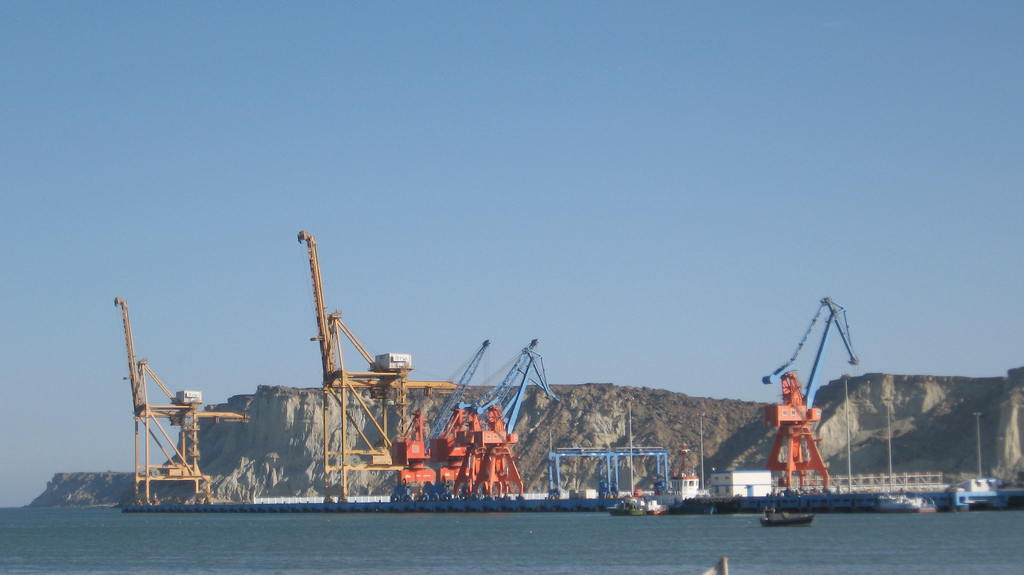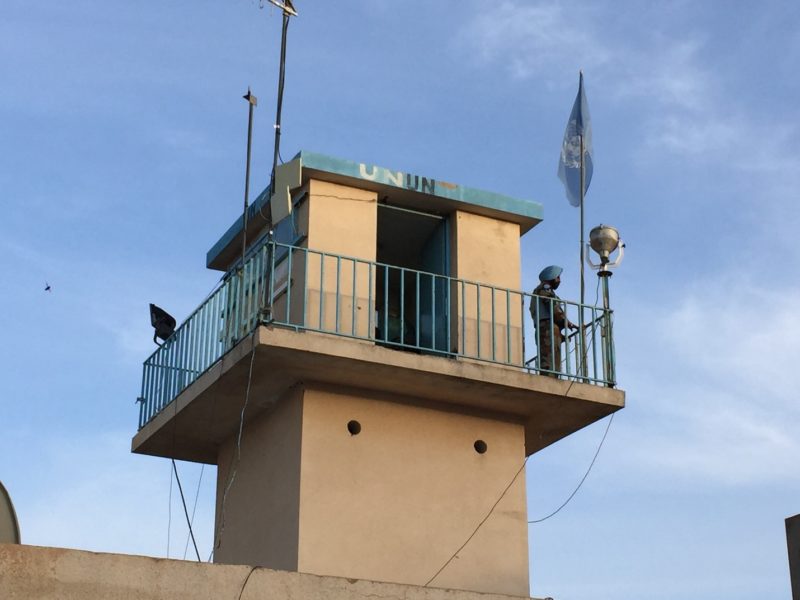By Cullen Hendrix for Denver Dialogues.
Note: This post draws on the author’s chapter in a recently released Peterson Institute for International Economics Briefing volume. The author is a Nonresident Senior Fellow at the Institute.
China’s Belt and Road Initiative (BRI) – a plan to build a vast network of roads, rail lines, new ports, and other infrastructure improvements a in more than 60 countries, at a cost of $4 trillion – is an economic policy designed to radically expand trade and investment in Asia and around the Indian Ocean. Critically, however, it is also a security initiative with the aim of facilitating economic integration and promoting longer-run peace in the region.
The economic benefits are likely to be large, but there may be rough patches along the new Silk Road. While the proposed investments are precisely the types of trade-enhancing projects development economists have long called for, the geopolitical implications of BRI are complicated. From the restive western Chinese province of Xianjing to Jammu-Kashmir, the Myanmar-Chinese border, and the Indian Ocean, BRI-related initiatives target or traverse some of the world’s most contested territories. Major power development programs abroad – such as the US Marshall Plan and Alliance for Progress – have always been motivated by a mixture of economic and security concerns. Indeed, BRI is intended in part to address security fears emanating from these regions by improving economic prospects.
On the security front, BRI provides one big (potentially) security-enhancing opportunity stemming from the generally positive effects of regional economic integration. The picture, however, is not entirely rosy. BRI entails significant security risks as well. Some, like China’s territorial ambitions in the South China Sea, have received considerable attention. Others have not. This post focuses on the threats stemming from the short-term creation of soft targets related to specific infrastructure projects in potentially volatile areas and the longer-term geopolitical impacts of these projects for India. In both the best- and worst-case security scenarios, the elephant in the room is of the indicus variety.
Assuming BRI achieves its intended goal – further integration between China and the economies of Asia, Africa, and the Middle East – it should establish common interests among China’s trading and investment partners as well as between linked countries, including India. Trade and financial integration tend to reduce conflict between states, raising the opportunity costs – in terms of foregone trade and investment – associated with conflict and creating vested domestic interests in both that prefer peace to war. The rise of global supply chains and production networks, in which intermediate goods are often not immediately substitutable from other sources and therefore incentives to maintain existing supply chains are strong, only enhances these tendencies.
Many parallels have been drawn between the Marshall Plan, the United States’ massive re-development and re-integration plan for Western Europe following World War II, and BRI. Yet most focus on the wrong detail: the difference in magnitude of the associated financial commitments. While BRI may ultimately dwarf the Marshall Plan – If the Chinese government reaches its maximal funding target of $4 trillion USD, the investment would be roughly 31 times larger – a striking similarity is that of intention. Both undertakings reflect efforts by major powers to develop and integrate the economies of their neighbors and trading partners in order to avoid militarized competition. In this sense, the Marshall Plan was one of the most successful security initiatives of the Cold War, helping to integrate Western European economies and forestall a return to the economic competition and arms races that had catalyzed two World Wars. While it remains to be seen whether BRI will match the successes of the Marshall Plan, it is similar in ambition, even if this ambition is being downplayed rhetorically.
For this basic reason, BRI’s potential security benefits are large. However, they are balanced by several risks stemming both from the infrastructure expansion itself and its geostrategic implications for India. The BRI is a series of massive infrastructure projects, ranging from highways and railways to ports, pipelines, electrical substations, and dams. Much of this investment is slated to occur in volatile areas, and infrastructure and the attendant construction projects make for enticing “soft” targets for violent dissidents looking to make headlines, wreak havoc, and/or ensnare a more powerful foe in a costly counterinsurgency campaign.
South and Southeast Asia are home to a disproportionate number of the world’s national self-determination movements, such as the Timorese in Indonesia and Assamese in India, and virtually all of them have used violent means to contest state claims to rule. Infrastructure is the skeletal system of the state: roads and power grids are the most obvious mechanisms by which the state facilitates its own projection of authority into areas where its penetration is otherwise weak or contested. For this reason, infrastructure projects are especially contentious when they occur in areas where ethnic or religious minorities seek autonomy or self-determination. The China-Pakistan Economic Corridor (CPEC), for instance, plans to link the western Chinese city of Kashgar to Pakistan’s warm-water deep-sea port at Gwadar. To do so, the project will need to traverse territory dominated by marginalized ethnic minorities in both states – Balochs in Pakistan, Uyghurs in China. Pakistan is already increasing the size of its military – with plans to increase it even further – in order to protect BRI-related infrastructure projects. Moreover, it will pass also through the contested Jammu-Kashmir region.
This brings up the Indian elephant in the room: India’s perceptions of BRI. In the long-term, BRI will include India but also encircle it. BRI potentially threatens Indian interests in two main ways: 1) increasing Chinese and Pakistani activity in the disputed Jammu-Kashmir region; and 2) increased Chinese naval presence in the Indian Ocean.
Jammu-Kashmir is one of the last true powder kegs in global geopolitics. The competing claims of India and Pakistan to the disputed territory is a live issue putting nuclear armed rivals against one another in the shadow of a third, larger nuclear power (China) with its own ambitions in the region. As I write (October 3, 2016), Indian and Pakistani troops are exchanging fire across the Line of Contention. This latest flare up occurs just days after Indian troops crossed into Pakistani-controlled disputed territory to strike Pakistan-based – and by some accounts, supported – anti-India militants.
As China’s economic interests shift toward Africa and the Arabian Peninsula, its naval posture will as well. Greater Chinese emphasis on the Indian Ocean will come at the cost of commensurate Indian suspicion of China’s activities in its maritime backyard. India has been the ocean’s regional hegemon since the 1990s, and it still fields two aircraft carriers to China’s one, but this hegemony will certainly be threatened.
While BRI is an economic policy, it has the potential to radically alter the security landscape in Asia, linking regional economies in ways that massively increase the economic costs of war and instability and bringing development to long-marginalized regions and people. Both developments would promote peace. However, the process is likely to entail some significant security risks. In the short-term, infrastructure projects will expand into restive regions and contest local authority. Given that the 21st century is expected to belong, economically, to China and India, maintaining peaceful relations between the two ascendant powers will be one of the central challenges of our time.





